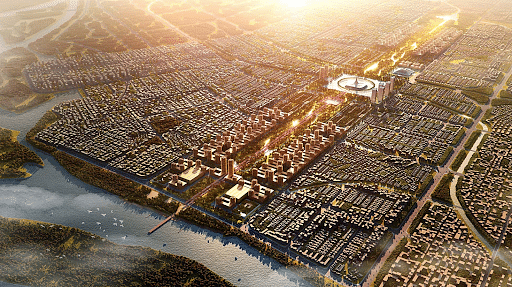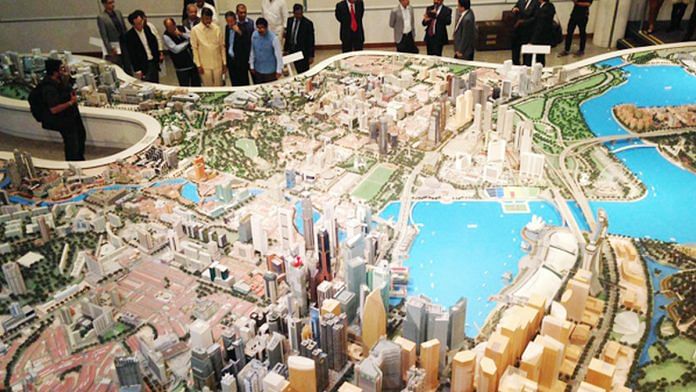In Andhra Pradesh, the local government has enlisted Norman Foster to help redesign the capital city, Amaravati.
Skyscrapers, high-rise apartments, neon signs and congested roads. These are a few things that might spring to mind when you think about a modern city.
Many of the world’s major conurbations are organically grown sprawls – think of London, Tokyo, New York or Mexico City – and face challenges including air pollution, traffic jams, waste disposal and homelessness.
So what if you could start from scratch and try to create utopia? And what if one of the world’s leading architects designed the centre?

That’s happening in the Indian state of Andhra Pradesh, where the local government has enlisted Norman Foster to help redesign the capital city for the province, Amaravati. Singapore-based urban consultants Surbana Jurong are also involved in the planning, which aims to create jobs and homes for all, a world-class infrastructure, a green city and efficient resource management.
Foster’s team is designing the central focus of the 217-square-km city, including the Legislature Assembly and High Court Complex, and according to the architect, the design will incorporate “decades-long research into sustainable cities” as well as the latest technologies being developed in India.
Large shaded walkways to encourage people to walk through the city, lots of green spaces, widespread use of solar energy and a transportation strategy that includes electric vehicles, water taxis, and dedicated cycle routes characterize the plans, which are set to be realized within 25 years.

The plans could help illustrate how to address the challenges faced by other cities around the world and those discussed by the World Economic Forum Council on Cities and Urbanization.
This will become more important as the planet becomes increasingly urban, with around 70% of the world’s population forecast to live in cities by 2050.
In its report Harnessing the Fourth Industrial Revolution for Sustainable Emerging Cities, the Forum looks at how the world’s emerging cities can harness rapid and disruptive technological change to help build a sustainable future.
“Fourth Industrial Revolution technologies such as artificial intelligence, autonomous vehicles and drones, the internet of things, advanced materials, 3D printing and biotechnology are particularly relevant,” Celine Herweijer, a partner at PwC UK wrote in the report. “Many are already showing promise at reshaping urban sectors – including transport, energy, waste, water and buildings – and change will only accelerate.”
A $5 billion annual opportunity
In a separate paper, the Forum assesses how the state of Andhra Pradesh could benefit from harnessing new technologies and concludes there could be a $5 billion annual opportunity by 2022.
Cities in other locations are also aiming to become more sustainable. Copenhagen wants to become the world’s first carbon-neutral capital by 2025. Norway is building Oslo Airport City, a 4 million square metre city that will take 30 years to build and be powered entirely by renewable energy and served by electric vehicles.
In a Forum podcast on the future of cities and urbanization, Abha Joshi-Ghani, Senior Advisor on Infrastructure, Public-Private Partnerships and Guarantees at The World Bank discussed simple ways that technology can be harnessed to address waste and mobility problems, for example waste bins that send messages when they are full.
Joshi-Ghani and her co-chair of the Forum’s Council on Cities and Urbanization, Carlo Ratti, discussed how cities need strong leadership and a space for young graduates to experiment with new ideas for innovation to flourish.
“Look at technology and look at how data can change a city,” said Ratti, who is also director of the SENSEable City Laboratory at MIT. “But for the ultimate goal, never forget the three most important things: people, people and people.”
Emma Charlton is a writer. This article was originally published on the World Economic Forum. Read the original article.






